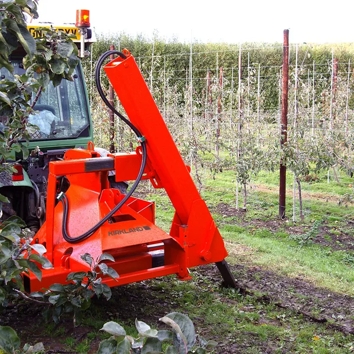

Yesterday: Thursday The English Apple Man visited Jonathan Duke at Park Farm Frittenden in West Kent
Park Farm is always a joy to visit and a credit to the management of Jonathan Duke who wins awards every year for his skills.
See Park Farm Wins Goudhurst & Paddock Wood NFU Orchard Competition
Click on: Orchard Competition 15th August 2014
On Wednesday Park Farm enjoyed some rain, circa 1.5 inches (in Frittenden Village they had much more) but it will hopefully rain some more next week and with a few weeks to go before harvest, the fruit size will improve.
The drought has hit home this year at Park Farm and in particular on some of the Conference Pears. Otherwise healthy new growth has turned brown and Jonathan thinks it is due to the soil which is a mixture of 'Tunbridge Wells Sand and Wadhurst Clay' he thinks the Wadhurst Clay got so hot it impacted on the roots and affected the leaves on some branches. Interestingly none of the Comice Pears are affected
Below: left and right; Conference Pear trees affected by the drought
Below: this picture shows a strip of trees with considerable browning
The Wadhurst Clay Formation is a geological unit which forms part of the Wealden Group and the middle part of the now unofficial Hastings Beds. These geological units make up the core of the geology of the High Weald in the English counties of West Sussex, East Sussex and Kent.
The other component formations of the Hastings Beds are the underlying Ashdown Formation and the overlying Tunbridge Wells Sand Formation. The Hastings Beds in turn form part of the Wealden Group which underlies much of southeast England. The sediments of the Weald, including the Wadhurst Clay Formation, were deposited during the Early Cretaceous Period, which lasted for approximately 40 million years from 140 to 100 million years ago. The Wadhurst Clay is of Early to Late Valanginian age. The Formation takes its name from the market town of Wadhurst in East Sussex.
Below: left; Comice Pear trees and right; a close up of a Comice Pear Tree
Below: left; Comice Pears and right; Conference Pears
Park Farm has a good crop of pears and Jonathan believes his use of root pruning is responsible for a gradual improvement in yielda at Park Farm. He has stared with caution, but gradually root pruned closer to the tree.
Below: left; Root Pruning machine and right; the visible sign of where the root pruner travelled

Jonathan grows 4 clones of Gala at Park Farm: Galaxy, Brookfield, Schniga and Gala SchniCo Red
Below: left; Gala rows and right; young Bramley orchard
Below: left; well established Bramley orchard and right; Sunscorch is very prevalent this season
Below: left; Zari rows and right; Zari trees
Below: left & right; ZARI apples
Below: Park Farm is set in a naturally wooded area and enjoys views towards The North Downs at Linton
Below: a resident BUZZARD
At Park Farm with woodland and ponds and small lakes attracting much wildlife, we spotted this Buzzard devouring its pray before flying into a nearby hedge
From my agronomist friend Nigel Jenner - General comments for this Season
1.) Although there are several orchards suffering from stress as a result of the recent hot,
dry weather, the affect on the fruit seems to be more to do with soil type/depth rather
than whether the orchard has been irrigated or not.
2.) It is also apparent that where irrigation has been applied before 'stress' becomes
apparent, fruit has continued to grow at a somewhere near 'normal' rate. If irrigation
has been applied after stress symptoms have become apparent, it has done virtually
nothing to fruit size.
3.) Weather conditions are likely to result in rapid fruit maturity.
4.) In all orchards, fruit is picking extremely easy. In many orchards (particularly
Bramley) significant fruit drop can already be seen.
5.) Sun scorch is significant in some orchards. Many Bramley orchards have up to 25%
damage!
6.) Brix levels are very good and should easily achieve supermarket specifications.
7.) Due to good weather at cell division, fruit firmness looks good
8.) Dry matter levels are very high, so flavour this year should be exceptional.
![]() That is all for this week
That is all for this week
Take care
The English Apple Man